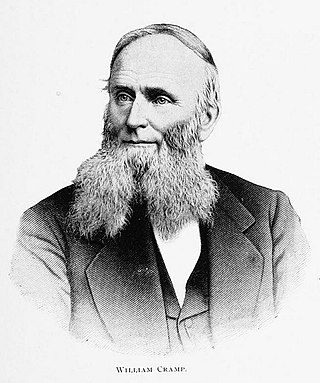
William Cramp & Sons Shipbuilding Company was an American shipbuilding company based in Philadelphia, Pennsylvania, founded in 1830 by William Cramp. During its heyday in late 19th century, it was the preeminent American iron shipbuilder.

Hawaii is a U.S. state that is an archipelago in the Pacific Ocean. Of the eight major islands, Hawaii, Oʻahu, Maui, and Kauaʻi have major tourism industries. Tourism is limited on Molokai and Lānaʻi, and access to Niihau and Kahoʻolawe is prohibited.
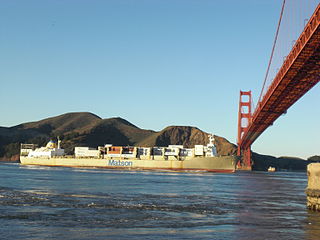
Matson, Inc., is an American shipping and navigation services company headquartered in Honolulu, Hawaii. Founded in 1882, Matson, Inc.'s subsidiary Matson Navigation Company provides ocean shipping services across the Pacific to Hawaii, Alaska, Guam, Micronesia, the South Pacific, China, and Japan.

Chandris Line was a Greek shipping company founded in 1960 by Antonios Chandris to operate ocean liners between Greece and Australia. Initially the company also traded under the names Greek Australian Line, National Greek Australian Line and Europe-Australia Line.

Amerikanis, formerly Kenya Castle, was a UK-built steam turbine ocean liner that became a Greek-owned cruise ship.
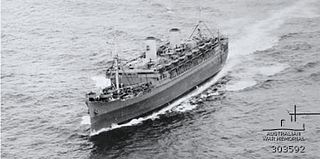
SS Mariposa was an ocean liner launched in 1931, one of four ships in the Matson Lines "White Fleet", which included SS Monterey, SS Malolo, and SS Lurline. She was later renamed SS Homeric.
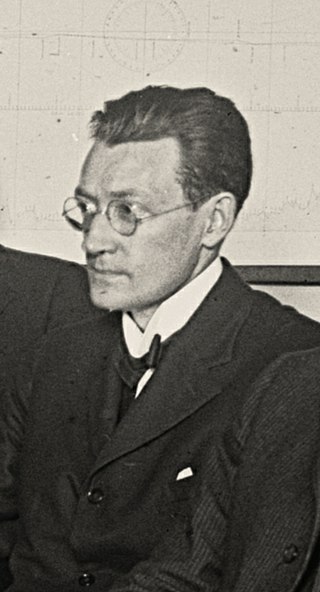
William Francis Gibbs was an American naval architect of the mid-twentieth century.

SS Independence was an American built passenger liner, which entered service in February 1951 for American Export Lines. Originally, she plied a New York-Mediterranean route, specializing in a high-end clientele, sailing one way while her sister ship, SS Constitution, plied the route the opposite. Starting in 1980 she sailed as a cruise ship. She was shortly joined by her similarly graceful counter sterned sibling, the pair sharing the Hawaiian islands together for the better part of two decades until their retirements.
Home Lines was an Italian passenger shipping company that operated both ocean liners and cruise ships. The company was founded in 1946, and it ceased operations in 1988 when merged into Holland America Line. Although based in Genoa, Home Lines was an international company with ships registered in Panama, while the original company chairman Eugen Eugenides was Greek. By the time Home Lines was merged into Holland America, they were one of the most highly regarded cruise lines in the world.

SS Lurline was the third Matson Lines vessel to hold that name and the last of four fast and luxurious ocean liners that Matson built for the Hawaii and Australasia runs from the West Coast of the United States. Lurline's sister ships were SS Malolo, SS Mariposa and SS Monterey. Lurline served as a troopship in World War II operated by War Shipping Administration agents serving Army troop transport requirements. Bought by the Chandris Lines in 1963 as the RHMS Ellinis the ship became one of the most important luxury cruise ships on the Australian and New Zealand services. She operated in Australasia and Oceania until 1980.
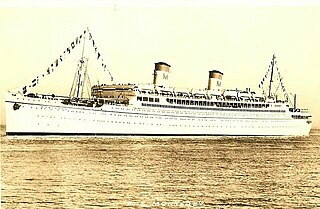
SS Monterey was a luxury ocean liner launched on 10 October 1931. The ship was completed April 1932 and is shown in registers as a 1932 ship. Monterey was the third of the four ships of the Matson Lines "White Fleet", which were designed by William Francis Gibbs and also included SS Malolo, SS Mariposa and SS Lurline. Monterey was identical to Mariposa and very similar to Lurline. During World War II Monterey was used as a troopship operated by Matson as agents of the War Shipping Administration (WSA). Monterey was a large, fast transport capable of sailing independently and was allocated to serving Army troop transport requirements. The ship was involved in an attack on a convoy near Cape Bougaroun.
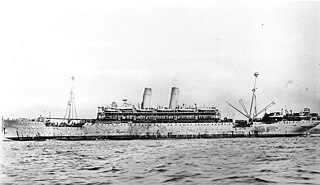
USS Princess Matoika (ID-2290) was a transport ship for the United States Navy during World War I. Before the war, she was a Barbarossa-class ocean liner that sailed as SS Kiautschou for the Hamburg America Line and as SS Princess Alice for North German Lloyd. After the war she served as the United States Army transport ship USAT Princess Matoika. In post-war civilian service she was SS Princess Matoika until 1922, SS President Arthur until 1927, and SS City of Honolulu until she was scrapped in 1933.

USS Matsonia (ID-1589) was a troopship used by the United States Navy during World War I. Before and after her Navy service she was ocean liner SS Matsonia for the Matson Navigation Company. The liner was sold in 1937 to the Alaska Packers Association and renamed SS Etolin. Shortly before World War II, the ship was chartered by the United States Army as USAT Etolin. Transferred to the War Shipping Administration in 1946, Etolin was placed in the James River Reserve Fleet and ultimately scrapped in 1957.

The Los Angeles Steamship Company or LASSCO was a passenger and freight shipping company based in Los Angeles, California.
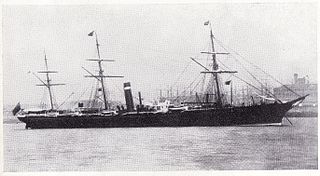
City of Paris was a British passenger liner operated by the Inman Line that established that a ship driven by a screw could match the speed of the paddlers on the Atlantic crossing. Built by Tod and Macgregor, she served the Inman Line until 1884 when she was converted to a cargo ship.

SS Maui was built as a commercial passenger ship in 1916 for the Matson Navigation Company of San Francisco and served between the United States West Coast and Hawaii until acquired for World War I service by the United States Navy on 6 March 1918. The ship was commissioned USS Maui (ID-1514) serving as a troop transport from 1918 to 1919. The ship was returned to Matson for commercial service September 1919 and continued in commercial service until purchased by the United States Army in December 1941. USAT Maui was laid up by the Army in 1946 and scrapped in 1948.
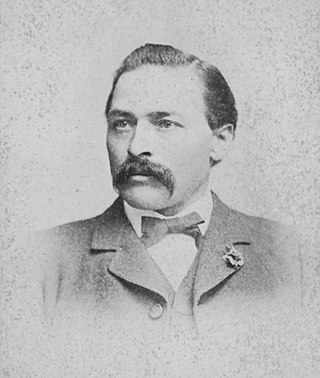
William Matson was a Swedish-born American shipping executive. He was the founder of Matson Navigation Company.

SS Manoa was an American freight and passenger steamship that sailed for the Matson Line from San Francisco to Hawaii. Unusual for her time, her engines and funnel were aft, minimizing vibration felt by the passengers and soot on deck. The aft design was considered ugly by passenger ship purists.



















